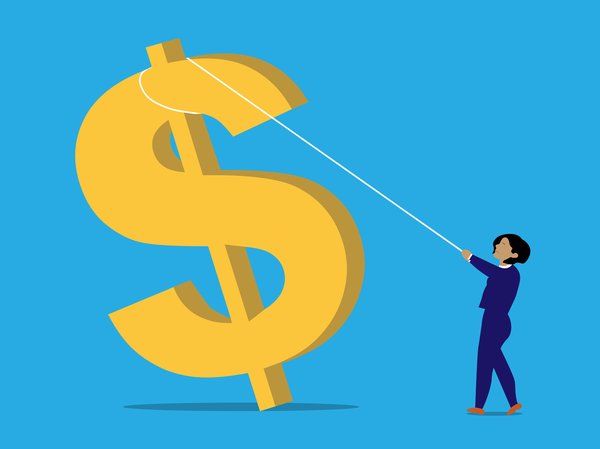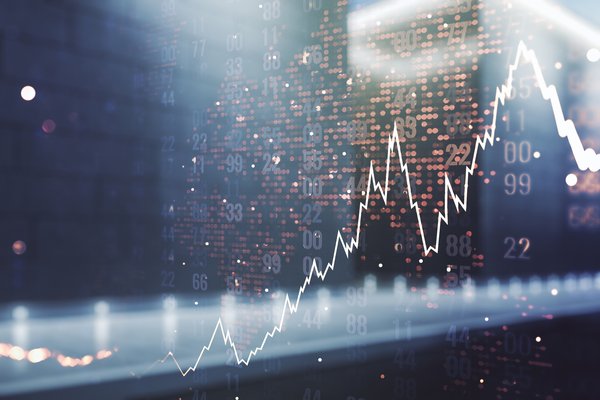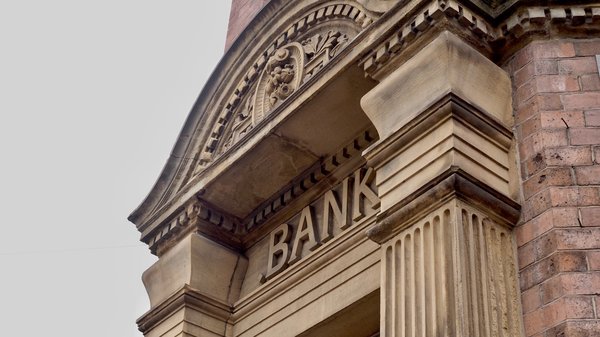Jim Cramer is the face of CNBC's Mad Money television show. In that role, he educates and entertains his audience by exuberantly explaining the latest trends in the financial markets. He also shares his views on which stocks and sectors are poised to outperform and which are about to flop.
Read on to learn how Cramer rose from journalist to hedge fund manager to TV personality, how he invests, and what's in the portfolio he manages today.

Who is Jim Cramer?
Who is Jim Cramer?
Cramer grew up in Pennsylvania and developed an early interest in investing. As a kid, he tracked a portfolio of stocks he picked but didn't own. Reportedly, his fictitious portfolio would have profited by seven figures before he finished elementary school.
Cramer's early career aspirations focused on journalism rather than investing. While attending Harvard University on scholarship, he served as editor-in-chief of The Harvard Crimson. After completing his undergraduate studies, Cramer worked as a journalist in Florida, Los Angeles, and New York.
In his 20s, Cramer had moved on to investing real money, refining his approach to focus on lesser-known stocks. He made enough in profits to pay for a year of his post-graduate studies at Harvard Law School. By the time Cramer completed his law degree, he was managing money for a Harvard Law faculty member and was ready to start a career in finance.
Cramer worked at Goldman Sachs for three years before he launched the hedge fund Cramer Levy Partners. Fewer than 10 years later, in 1996, he cofounded financial news website TheStreet. A few years later, he left the hedge fund to host syndicated radio show Jim Cramer's RealMoney. In 2005, he began his lengthy tenure as host of Mad Money.
Cramer has also written several books, including Get Rich Carefully and Jim Cramer's Real Money: Sane Investing in an Insane World. He sold his interest in TheStreet in 2019.
Jim Cramer's personal stats
- Age: Cramer is 68 years old. He was born on Feb. 10, 1955.
- Source of wealth: Cramer initially made his fortune by investing for himself and others.
- Marital status: Cramer is married to Lisa Detwiler.
- Residence: Cramer lives in Summit, New Jersey.
- Children: Cramer has two children with his first wife, Karen Backfisch-Olufsen, and one stepchild with Detwiler.
- Education: Cramer holds a bachelor's degree in government from Harvard University and a Juris Doctor (law) degree from Harvard Law School.
Jim Cramer's investment approach
Jim Cramer's investment approach
Cramer's investment approach follows opportunity. Whether the market's up or down, he believes there's opportunity somewhere and that it's the investor's responsibility to find it. In a bear market, that opportunity could be hiding in a less prominent industry or in a different asset class, such as bonds or cryptocurrency.
Admittedly, being opportunistic is an open-ended strategy that is not easy to teach or implement. Fortunately, Cramer also promotes some specific investing rules to guide his followers and fans. Five of those rules are explained below.
1. Do your homework
Cramer recommends investors devote sufficient time to researching prospective stocks. He rails against those who buy assets on hunches, tips, or headlines. In his view, an investor's pre-buy research must include learning the business model, understanding the financial statements, appreciating the product value, and researching the leadership team.
After buying a stock, Cramer recommends shareholders spend an hour researching for each stock they own. Those who can't or won't put in the time may be better suited for lower maintenance index funds. To quantify this recommendation, you'd need 15 to 20 hours weekly to support a diversified portfolio of 15 to 20 stocks.
2. Diversify across sectors
I can't say a diversified portfolio is bulletproof. But I can say that it makes it easier to stay in the game when one particularly popular group gets put through the meat-grinder.Jim Cramer
To Cramer, diversification is easy and obvious protection against sector weakness. After all, the investment community is fickle -- one bad news event can bring down an entire industry. When that happens, being diversified protects you from feeling the full force of the downturn.
3. Invest in the best in class
Cramer recommends investing in any industry's strongest player. That way, even if the industry falls out of favor temporarily, you know you own the company that will recover first. He compares this strategy to buying quality merchandise over cheaper goods. The quality stuff will last longer and won't need to be replaced as quickly.
4. Know when to buy and when to sell
Cramer is not a buy-and-hold-forever investor. He believes in strategically selling winners and taking profits when the opportunity arises, even if you plan to reinvest in that stock later.
The ebbs and flows in the technology sector since 2020 demonstrate how you might implement this strategy. Take Amazon (AMZN 3.43%), a stock Cramer loves. Between March and August of 2020, Amazon rose from about $90 per share to $170 on a split-adjusted basis. Investors who recognized that steep climb as an anomaly could have realized some nice profits in 2020 or 2021.
Amazon subsequently dipped as low as $84 per share. That pullback created a nice buying opportunity for fans of the e-commerce giant. As of mid-2023, the stock has recovered to about $125.
Of course, recognizing those peaks and valleys in the moment is easier said than done. Cramer believes you should know the value of what you own and be ready to trade when the stock price drifts too far from that value.
5. Keep emotions out of it
Cramer says panic leads to poor decision-making. He advises investors to stay grounded and focus on the value of their positions -- rather than the price the market is currently applying. With a clear head, you are more likely to see and act on opportunities in volatile markets.

Jim Cramer's investments
Jim Cramer's investments
Since Cramer is a stock-picking television personality, he invests his personal wealth in index funds to sidestep any conflicts of interest. He shared his personal allocations in a 2021 interview with AARP. Prior to his 65th birthday, he was invested in 80% U.S. stocks, 10% international stocks, and 10% gold and cryptocurrency.
After turning 65, he shifted to the more conservative composition of 50% cash, 40% U.S. stocks, 5% international stocks, and 5% gold and cryptocurrency.
Cramer's Charitable Trust portfolio
Cramer's Charitable Trust portfolio
The table below shows five holdings from Cramer's Charitable Trust portfolio. Cramer manages the portfolio, but the resulting income and capital gains are donated to charity.
| Name | Ticker | Market Cap | Description |
|---|---|---|---|
| Alphabet | NASDAQ: GOOG, NASDAQ: GOOGL | $1.58 trillion |
Digital ad provider, cloud computing provider, and maker of smartphones, wearables, and smart home devices |
| Amazon | NASDAQ: AMZN | $1.29 trillion | E-commerce retailer and leading provider of cloud computing services |
| Apple | NASDAQ: AAPL | $2.91 trillion |
Designs and produces smartphones, personal computers, tablets, and wearables |
| Meta | NASDAQ: META | $720 billion |
Develops and manages social media platforms (Facebook, Instagram, WhatsApp) and augmented and virtual reality hardware and software |
| Tesla | NASDAQ: TSLA | $825 billion | Maker of electric vehicles and energy-generation and storage solutions. |
Note that two small, unproven exchange-traded funds (ETFs) track Cramer's stock recommendations, both positively and negatively. The Long Cramer Tracker ETF (NYSEMKT:LJIM) invests in Cramer's picks, while the Inverse Cramer Tracker ETF (NYSEMKT:SJIM) shorts Cramer's recommendations.
More from Jim Cramer
More from Jim Cramer
Invest like Jim Cramer
Invest like Jim Cramer
Love him or hate him, Cramer is influential in the investment community. He promotes in-depth research, diversification, and adjusting your approach to market trends as primary investing strategies. To stay current on what stocks Cramer recommends, watch Mad Money, tune into his podcast, and follow Mad Money on Instagram.
Jim Cramer FAQs
How did Jim Cramer get rich?
Cramer started his wealth journey in his 20s by investing as a hobby. He would subsequently sell securities for Goldman Sachs, launch his own hedge fund, co-found TheStreet.com, and become the face of CNBC's Mad Money television show. Cramer reportedly generated double-digit, market-beating returns in his hedge fund over a 14-year period.
What is Jim Cramer famous for?
Cramer is best known for hosting CNBC's Mad Money television show. He's also a co-anchor on Squawk on the Street, filmed on the floor of the New York Stock Exchange at the start of each trading day.
How does Jim Cramer invest?
According to his stock picks in his investment club and on Mad Money, Cramer is an opportunistic investor. He views volatility as the opportunity to buy or sell. He likes growth stocks but will also take advantage of a good value.
Note that Cramer doesn't buy individual stocks with his own money anymore to avoid conflicts of interest. In 2021, he said his personal wealth was invested in 50% cash, 40% U.S. stock index funds, 5% international, and 5% in gold and cryptocurrency.
































